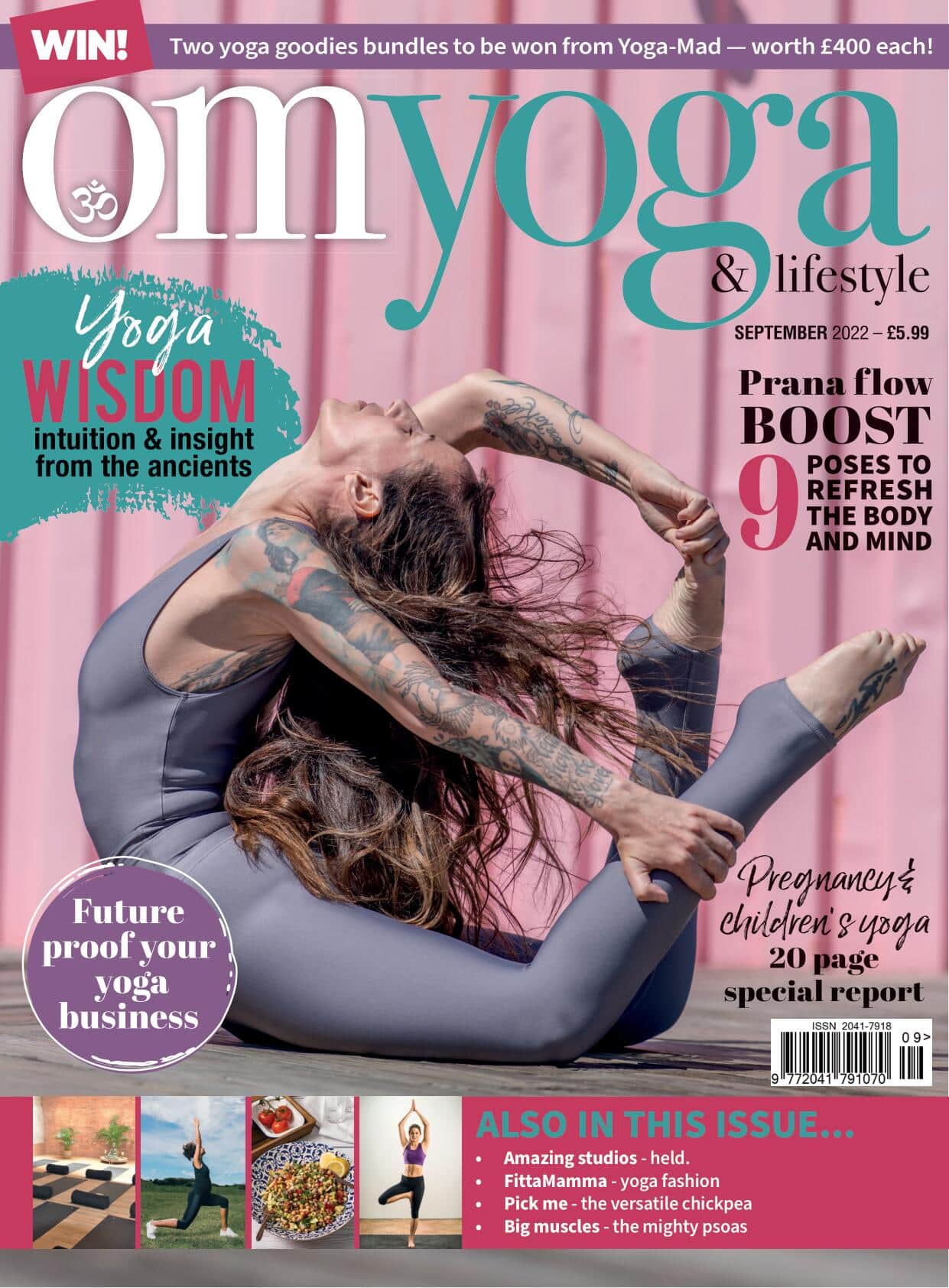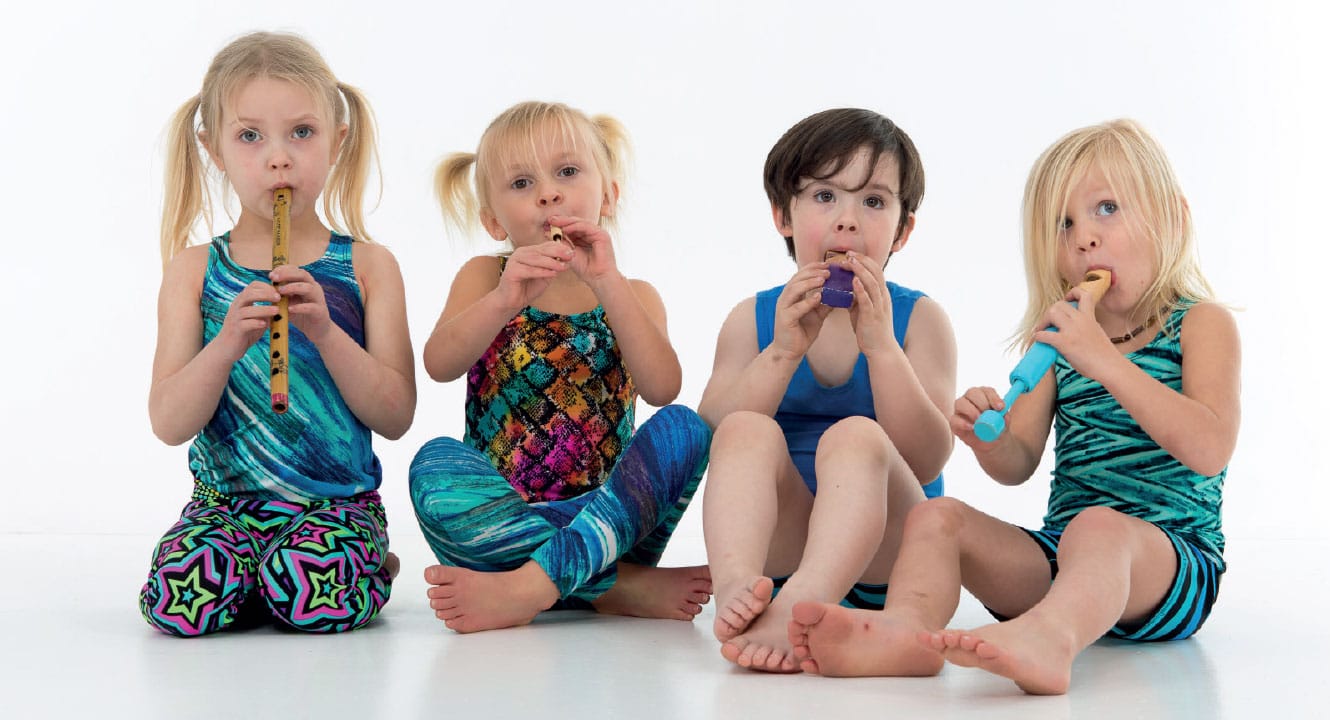
A few deep breaths
4 ways to help younger children breathe with more mindful awareness. By Gopala Amir Yaffa
Now, more than ever, we need to teach ourselves and our young ones more ways to self-regulate and cope. It’s a crazy world out there, and sometimes a few deep breaths can make a big difference in our tolerance levels and in our reactiveness to everything that life throws at us.
Breath is life! We can live without food for about 40 days, without water for a week, without sunshine for a while, without sleep for a couple of days…but we cannot live without the breath for more than a few minutes.
Just breathing deeply is boring for kids and yogic breathing exercises are usually too complex. But if you decorate the breath with interesting movements and sounds, imagination and fun games, they will practice breathing for longer than you probably can.
For the youngest kids, the term ‘breath’ just doesn’t mean anything, and if you use it, you won’t really get a response. Instead, try using words like smell or sniff, which the kids understand and to do, they need to breathe in deeply. Exaggerate your breathing or smelling enough so that it will be heard — only then will you see some change in the kids’ breathing. Tell the kids you want to hear their breath!
With children under the age of six, your goal is simply to help them breathe more and to breathe more deeply. Here are four ways to help them do just that.
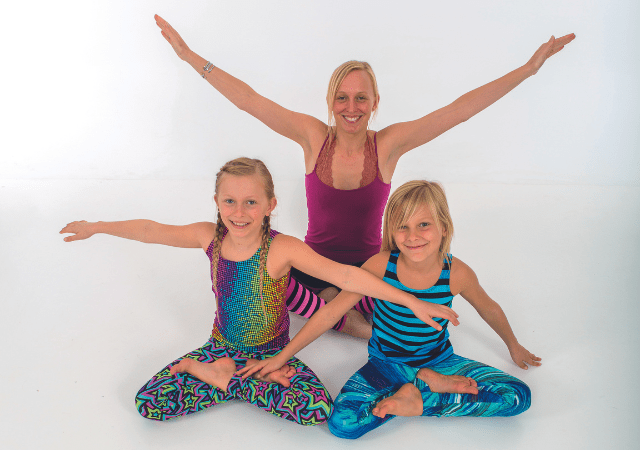
1. Using visualisation
• Butterfly smelling flowers: try it in butterfly pose bringing your nose to your toes!
• Smelling flowers and blowing candles: cup your hands to smell the flowers from and then make candles to blow on with your two index fingers.
• Bubble breaths: breathe deeply and imagine that with each exhalation you are blowing bubbles of peace or happiness or love into the room.
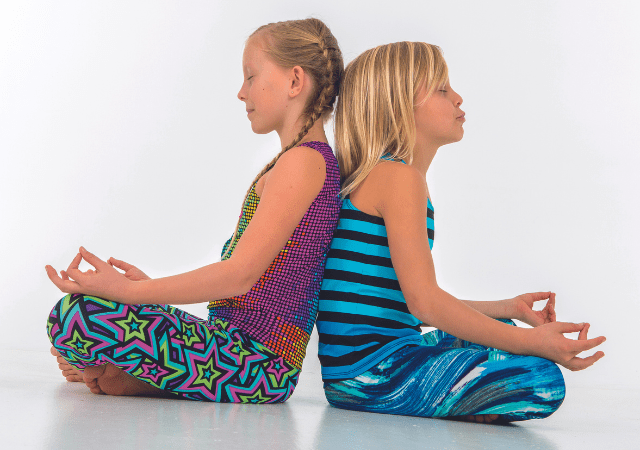
2. Have the breath make a sound
Using props:
• Flutes
• Trumpets
• Whistles
• Slide whistles
Using your body:
• ‘Om’ing
• Humming
• Snoring
• Yawning
• Sighing
• Sneezing
• Dog’s breath
• Lion’s breath
• Bee’s breath
• Snake’s breath
• Elephant’s breath
• Bunny’s breath
• Horse’s breath
• Car breath
• Train breath
• Whistling (or trying to!)
• Darth-Vader breath (like Ujjai)
And one more…
• Waves breath: block your ears with your fingers or thumbs and listen to the sound of your breath. It sounds just like waves in the ocean. When you breathe in, the waves come closer, and when you breathe out, the waves withdraw back into the ocean.
3. Have the breath move something
• Scarves, a sheet of paper or newspaper: blow on it holding it in front of you, blow it up in the air, blow it to each other in pairs.

• Ping pong balls breath pass: in front of each other or in a circle pass the ball using your breath – use straws to help little kids create the right shape to blow with their mouth.
• Cotton balls distance breath: how far can you blow the ball? Compete against yourself bettering the distance every round.
• Cotton balls across the room: compete against yourself trying to bring the ball across the room with fewer breaths every round.
• Feathers: make them move using your breath. Try blowing from your mouth, or nose (it’s easier with one nostril blocked), or blow them up in the air.
• Fly, little bird, fly: organise the children into groups of three. Give each group a long piece of string, and a paperclip with paper attached to it for wings. Two of the students will be standing trees, holding the string across the classroom. The other is the wind. Thread the bird onto the string. It’s the wind’s job to blow the bird from one tree to the other.
• Suck it up: inhale through your mouth to draw your hand closer to your lips until it is totally sucked in against your mouth. Stay here for a short moment and then forcefully blow it away from you.
Practice with other body parts such as your shoulder, knee or leg, or even suck in and blow away your friend’s body parts or their whole body from across the room!
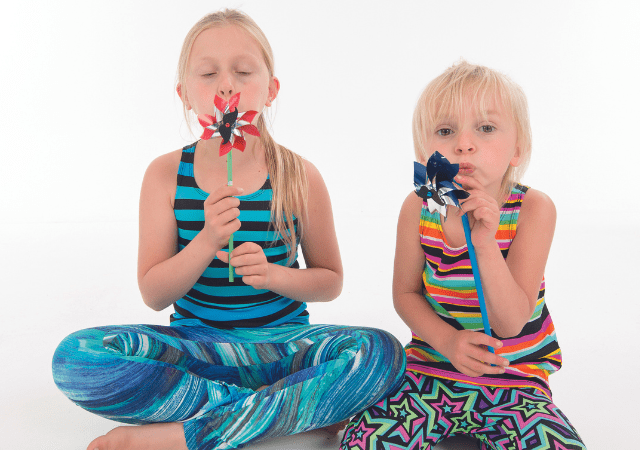
4. Combine the breath with movement
• Angel’s breath: start with your arms by your sides. When you inhale, lift your angel wings (your arms) up, and when you exhale bring them back down.
• Washing machine breath/Helicopter breath: place your hands on your shoulders and start twisting your upper body from side to side. Breathe in as you twist to one side and breathe out as you twist to the other side.
• Elephant breath (can also be Woodchopper breath): standing with feet apart, inhale through your nose and lift your trunk (your hands with interlocked fingers) up, and exhale through your mouth, dropping your trunk and body
down.
• Reach and pull: inhale and lift your arms to reach up, exhale and with a pulling motion (as if you are pulling something) bring your arms back down. Repeat a few times.
• Stand and squat: inhale standing up and exhale coming into a squat.
• Breathe and pass twists: sit back-to-back with a friend and pass a ball or any other prop from one to the other by twisting from side to side. Give and receive with both hands. Inhale while receiving and exhale while giving.
• Rainbow breath: on a whiteboard or on paper, inhale and draw up and then exhale and draw down. Use different colours to make it more beautiful!
• Breathing and moving: stretch your arms to either side of you and start with small circular movements moving only your fingers while breathing very gently. Slowly make the movements and the breath bigger and bigger until your whole body moves with the breath.
• Personal hug breath: inhale and spread your hands to the sides, exhale and hug yourself placing your hands on your
opposite shoulders or even shoulder blades. Repeat as many times as you want. By breathing more deeply we can help alleviate many problems like fatigue, depression and anxiety. Sometimes all we need is more oxygen. Breathe deeply and see the results for yourself!
Gopala Amir Yaffa is the founder of Rainbow Kids Yoga Teacher Training. Visit: rainbowyogatraining.com


